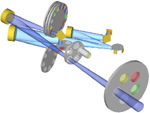
| You are in: Instruments > T-ReCS > Astrometry |
 |
T-ReCS Astrometry |
USER 1
Astrometry
For T-ReCS there are two types of astrometry or "Blind offsetting" available. In the "preferred" case of astrometry the reference star and the science target share the same guide star. This is the USER 1 case (see also http://www.gemini.edu/sciops/telescope/telAcquisition.html). The astrometry of this method is accurate to 0.2 arcseconds for a USER 1 star located within 50 arcseconds of the source. The astrometry becomes less accurate the further the star is away, with precise measurements still being gathered by Gemini staff. In the case where no suitable star is located within 50” of the source one as close as possible to the science target should be chosen. USER 1 astrometry requires two additional steps in the observation sequence. An example of a USER 1 OT is shown in detail in the T-ReCS OT library file containing examples of typical T-ReCS observations that is available for "fetching" from the Observing Tool database.
STEP 1: Select a “HOTSPOT” star, which is defined as a relatively bright mid-IR star spectral type K or M and Vmag<8, that is within 20 degrees or less of your source. This short (~15min) imaging observation is to calibrate the optical-to-mid-IR centering and is charged to the PI.
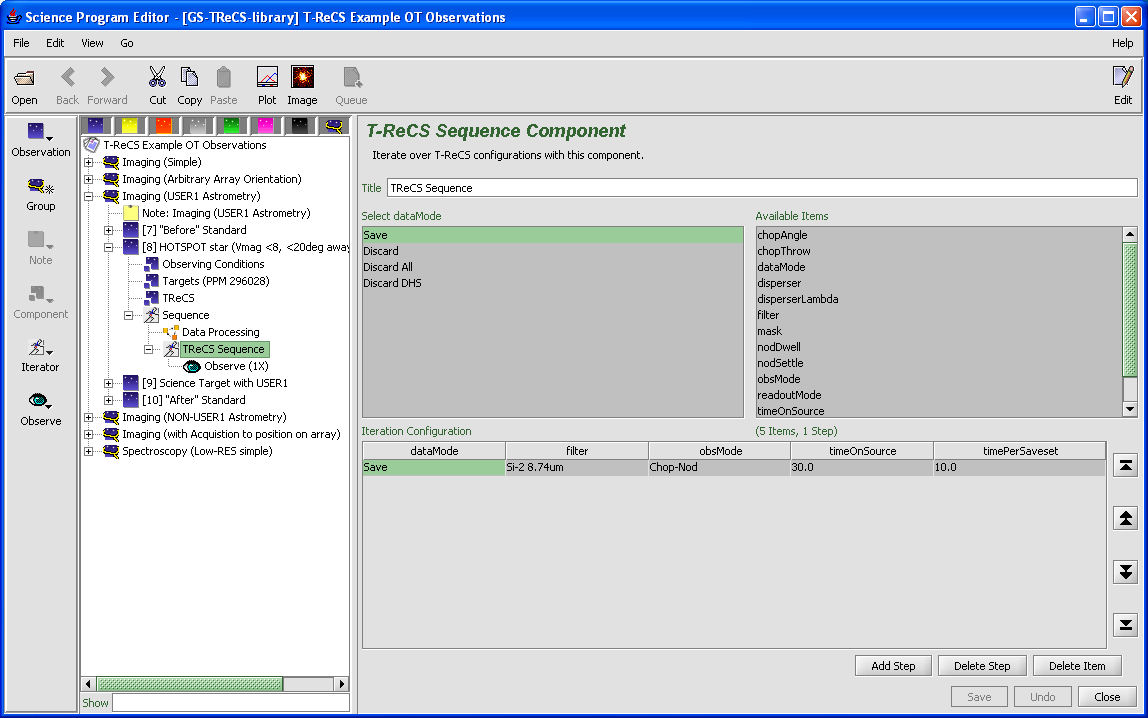
STEP 2: Select a USER 1 star. This is a star close to the science target (preferably <50”) that is bright enough to align on (Vmag <18), and with a coordinate system that is accurate and common to the science target, so that the telescope control system will determine accurate offsets between the two positions. As a general suggestion the Second U.S. Naval Observatory CCD Astrograph Catalog (UCAC2) from CDS has been used effectively in the past. The UCAC2 is the second release of the ongoing UCAC project, and contains stars from about R magnitude 7.5 to 16 at declinations mostly from –90 to +40. The observed positional errors are about 20 mas for the stars in the 10 to 14 magnitude range, with about 70 mas at the limiting magnitude of R about 16.
A USER 1 star can be selected in a similar manner to the selection of a guide star by using the “Position Editor”. Simply load a catalogue (e.g. UCAC2, etc) and select a star close to the source that can use the same guide star as the science target. The USER 1 star must be in the PWFS FOV so must not be farther than 7 arcminutes away from the guide star nor can the USER1 target be too close to the guide star (~4 arcminutes) such that it is vignetted by the probe arm. This can be measured by holding down the right mouse button while on the guide star and dragging the mouse to the position of the proposed USER 1 star. The distance shown will be in arcminutes and arcseconds.
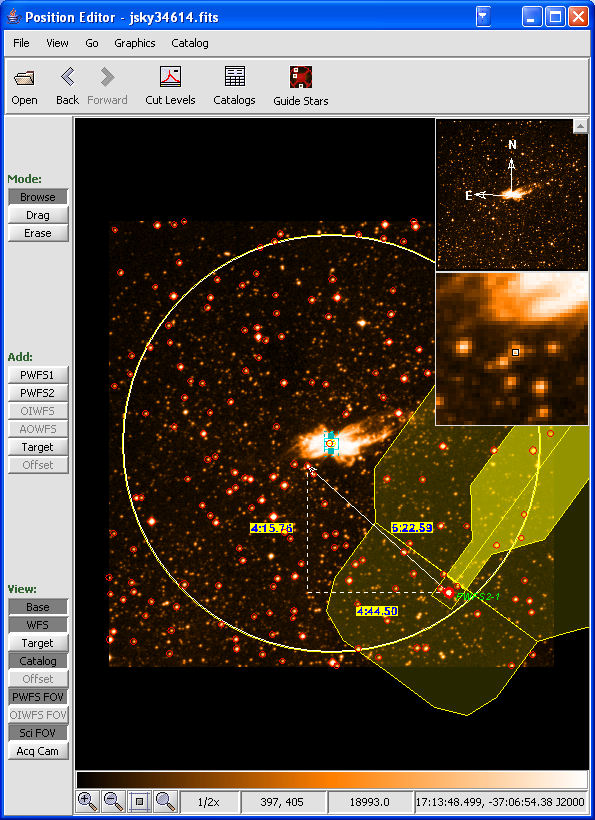
There is no specific button on the position editor for selecting a USER 1 target. However since T-ReCS uses the PWFS2 (in yellow) one may use the PWFS1 (in white) to help distinguish your choice of a USER 1 target. Vignetting with PWFS1 is not an issue in this case since you will be using it simply to select a target and not for any actual guiding.
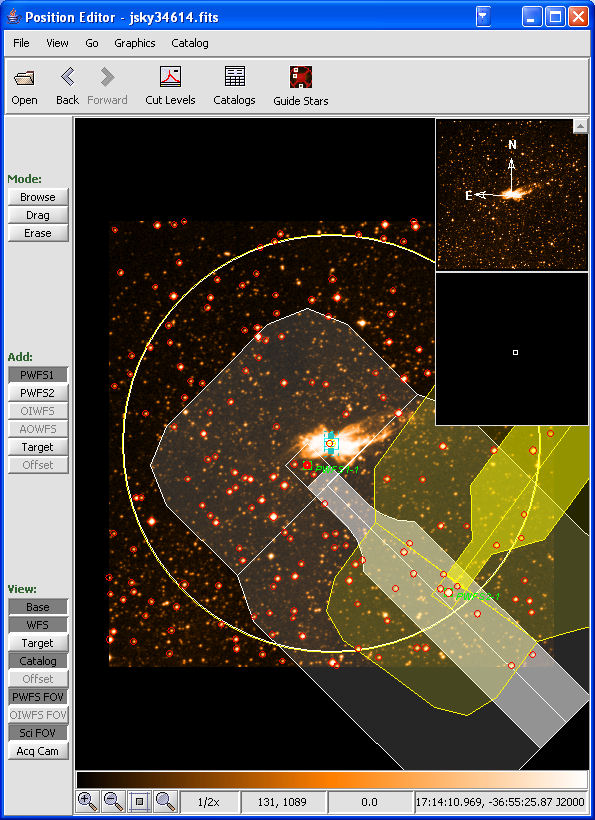
Once you have selected a USER 1 target using PWFS1 go to your science target in the OT select the PWFS1 star and at the top where it says “Tag” change it to “User”.
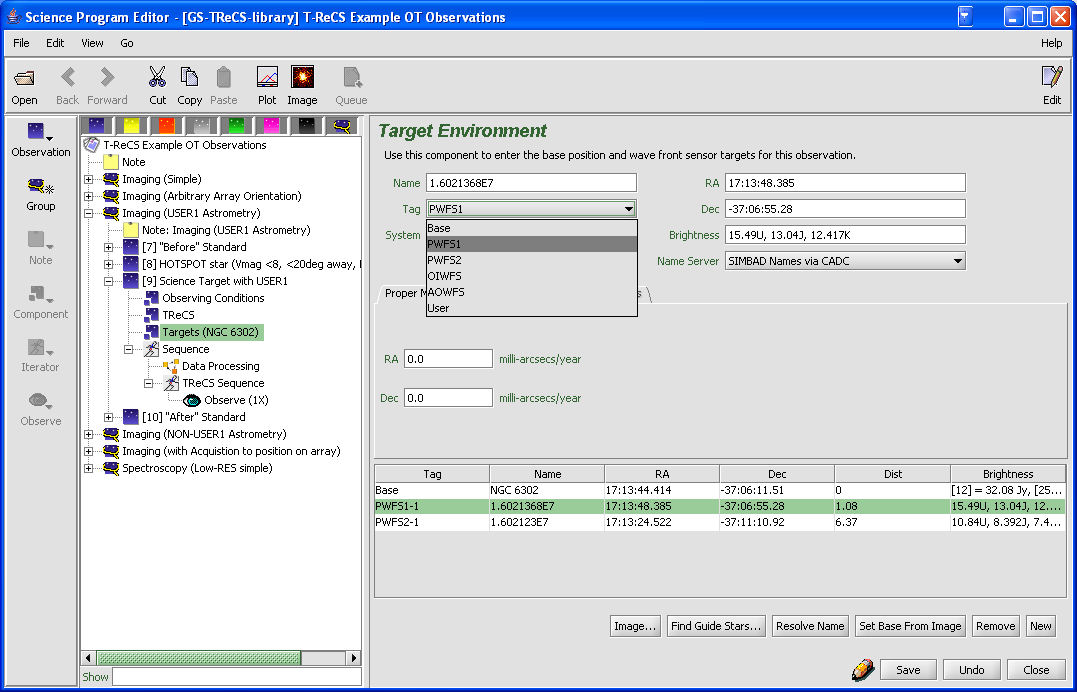
Once this is done the PWFS1 probe arm area (in white) displayed in the position editor will disappear. Currently there is no specific graphic to show the USER 1 target in the position editor. However the USER 1 target can be seen under Target in the OT.
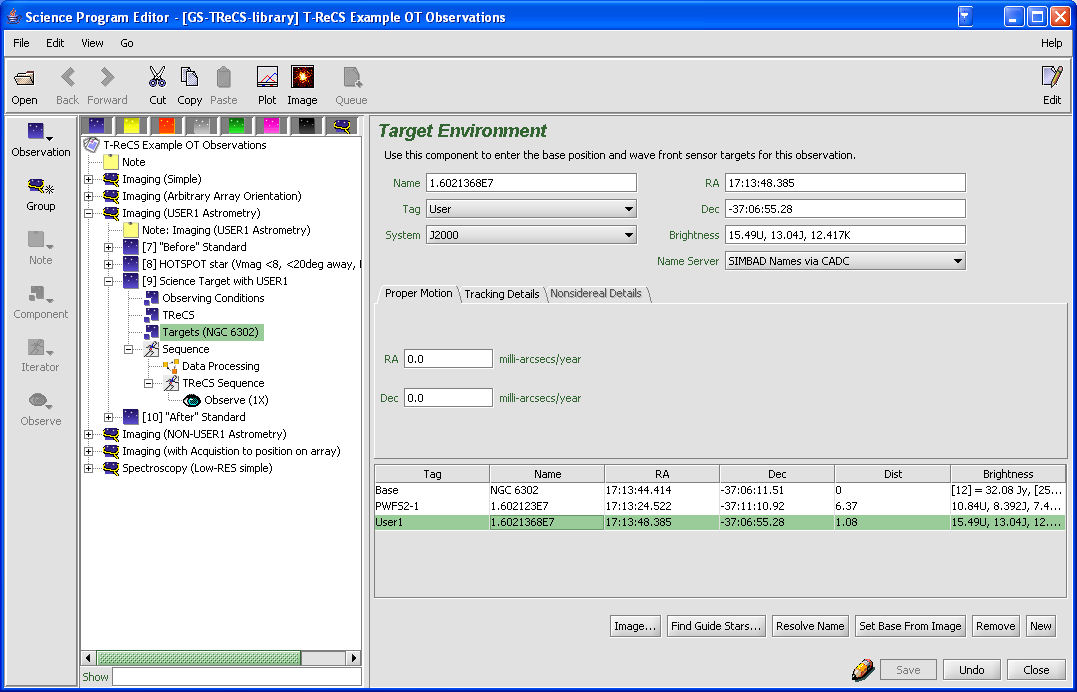
NON-USER 1
Astrometry
In the case where no USER 1 star is available, the telescope may use the guide star as an astrometric reference. This case is not as accurate as USER 1 and Gemini staff is still gathering precise measurements of its accuracy. As this case is still under testing it should be used with caution. The steps for this procedure are outlined below.
STEP 1: As above select a “HOTSPOT” star, which is defined as a relatively bright mid-IR star spectral type K or M and Vmag<8, that is within 20 degrees or less of your source. This short (~15min) imaging observation is to calibrate the optical-to-mid-IR centering and is charged to the PI.
STEP2: Select a guide star for your target with a coordinate system that is accurate and common to the science target, so that the telescope control system will determine accurate offsets between the two positions. As above the UCAC2 catalogue seems to work well.
STEP 3: In order to highlight that this is not a USER 1 sequence that is simply missing a USER 1 target. Put a NOTE in the sequence explicitly confirming that no USER 1 target is available and that this is a NON-USER 1 case.
Last update 2006 March 13; James Radomski